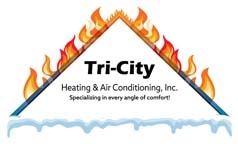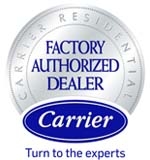There are six things you can do in your house to enhance the quality of your indoor air and decrease pollution. To enhance air quality, inspect vents and change filters. Interstate traffic is bumper-to-bumper. Smokestacks from industry. When we think about air pollution, these are just a handful of the pictures that come to mind. What about pollution in the home? Do you ever consider the safety of the air in your home?
The fact is that indoor air pollution is just as hazardous – if not worse – than outdoor pollution. So, given that the average American spends 87 percent of their time indoors, you’d think we’d hear about indoor air quality more frequently. But don’t be alarmed! You can enhance the quality of your indoor air now with some regular checks and some basic understanding.
Here are six things you can do right now to enhance your home’s air quality:
1. Use of indoor plants
Houseplants have several advantages that cannot be emphasized. Houseplants help to purify the air. Plants can truly breathe. They inhale carbon dioxide and exhale oxygen. Humans and animals breathe in oxygen and exhale carbon dioxide. You’re developing a symbiotic connection with plants by bringing them into your house, purifying the air, producing new oxygen, and beautifying it.
2. Turn on the blower in your furnace
Simply turning on your furnace blower is one of the finest indoor air quality recommendations for maintaining optimal air quality. This allows the air in your house to be recirculated via your intake and out of your supply ducts.
Further, ensure your furnace has a UV-lighting filtration system. Microbial bacteria and mold spores are killed by UV light. A furnace with a UV light filtration system cleans your air up to 90% better, significantly improving the quality of your indoor air.
Check to see whether your furnace has been serviced recently. If your furnace isn’t operating properly, it won’t be able to clean your air effectively. It can also lead to further maintenance issues or even cause the device to cease operating completely. It is important to get your furnace serviced on a regular basis. For the best maintenance routine for your furnace, contact your furnace service provider.
3. Replace your air filters as specified by the manufacturer
Your HVAC system’s air filter is your first line of defense against poor indoor air quality. The filter in a typical central heating and cooling system circulates around 1,000 cubic feet of air each minute. This means that every day, the full volume of air in your home goes through the filter numerous times.
A clean filter effectively eliminates airborne particulates, ranging from dust to minuscule particles that are undetectable to the naked eye. A filthy filter, on the other hand, can exacerbate indoor air quality by acting as a reservoir for dirt, dust, and other airborne toxins that are constantly pumped back into your lungs.
Replace the air filter on a monthly basis during both the heating and cooling seasons. Choose excellent pleated fabric filters certified to catch airborne particles as small as 3 microns instead of inexpensive, disposable fiberglass panel filters. You may then contact the nearest expert HVAC contractors in your area with this material.
4. Ensure that your ventilation system is in good working order
A whole other option for homeowners looking for ways to promote health and wellbeing is to replace stale indoor air. In the dead of winter or the sweltering heat of summer, popping open doors and windows isn’t an option.
Balance is the objective of appropriate ventilation. To dilute interior toxins and reinstate healthy air quality, remove stagnant, unhealthy air and replace it with an equivalent volume of fresh, filtered outside air. HRVs (heat recovery ventilators) have become the industry standard for residential ventilation.
5. Vacuuming on a regular basis will help to keep dirt and dust mites at bay
Weekly cleaning and vacuuming can greatly reduce the dangerous allergens, dust, and mites that poison your house and lungs, according to studies. The finest vacuums for asthma and allergies utilize a variety of technologies, one of which is a sealed system with a particular HEPA filter. You may get assistance from companies such as HVAC companies Loveland CO.
6. Have an HVAC technician inspect your home once a year
You should get an air quality test done if you are worried about the air quality in your house or business.
A qualified professional from hvac contractors can help you determine what sort of airborne issues you may be experiencing and what measures you need to take to remedy them with an indoor air quality test.
Conclusion
Although following these indoor air quality guidelines isn’t difficult, it does need some effort. You’re taking the appropriate steps to care for yourself and your family by bringing in houseplants, opening your windows, keeping your floors clean, and circulating the air through a well-maintained furnace.














